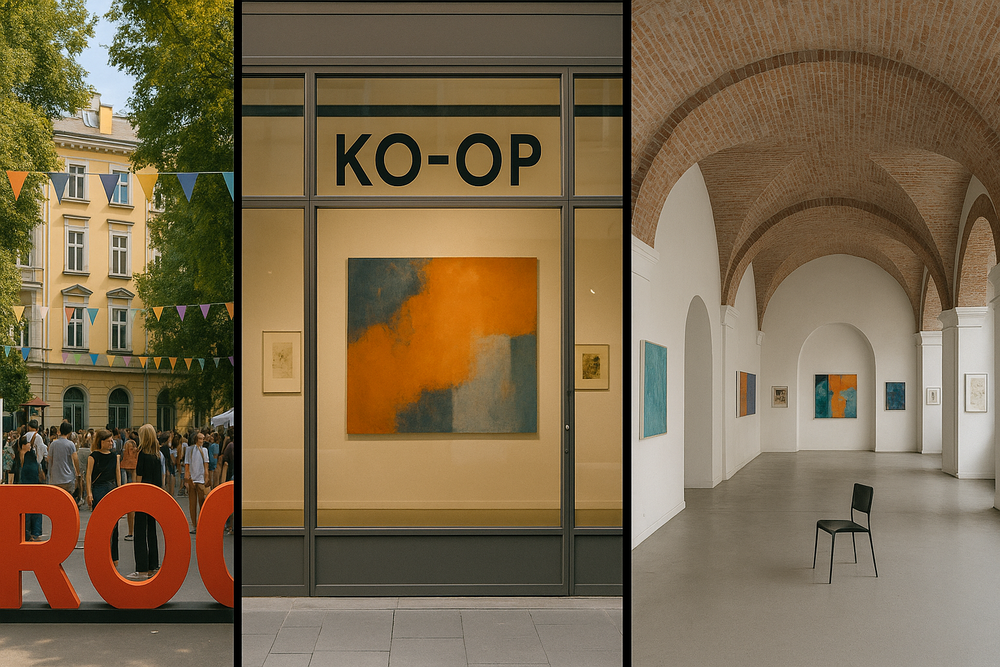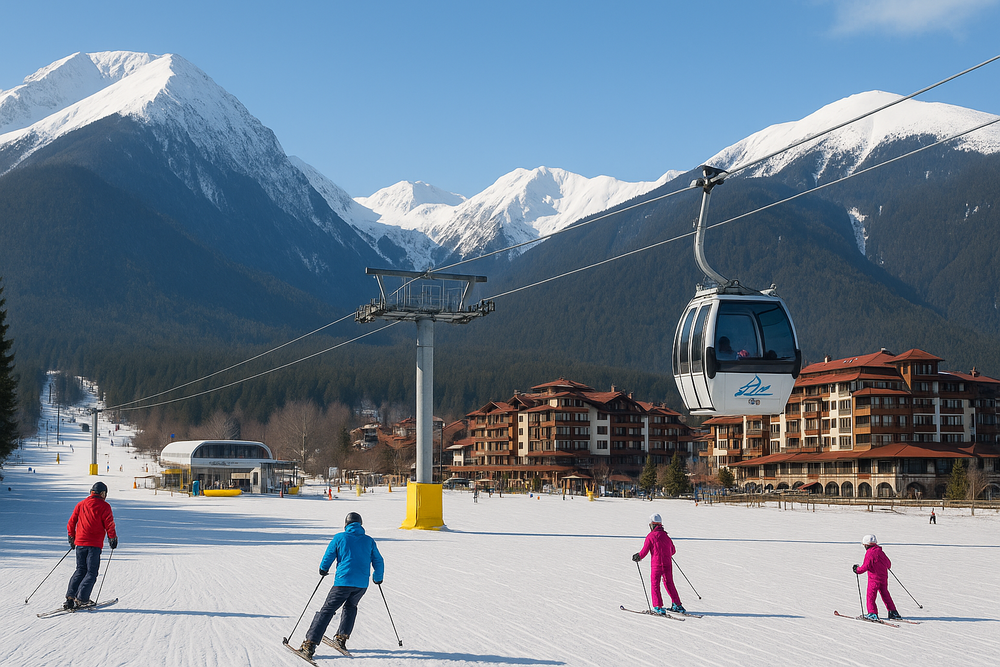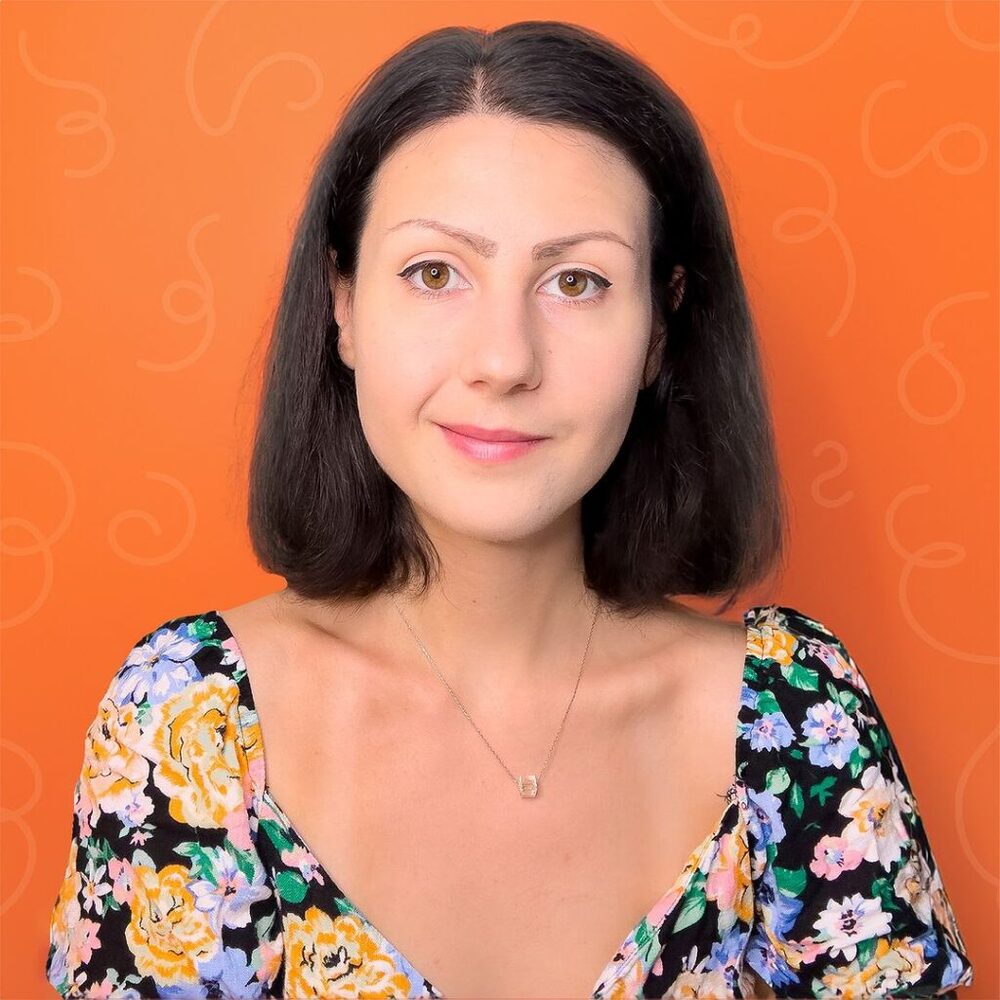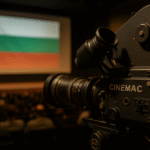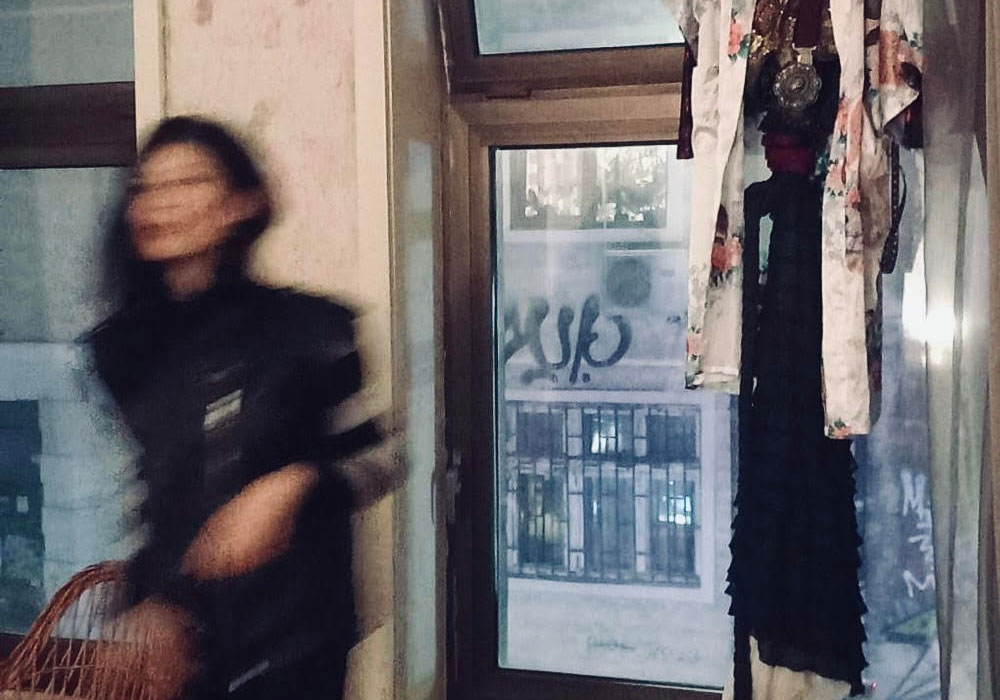Your recent series, Holding On, Choosing, Letting Go, beautifully visualizes the emotional process of release. What inspired you to use the red ball as a metaphor for pain, and how did this concept evolve?
Red is a color that cannot be ignored. It carries the heat of anger, the tension of anxiety, the weight of struggle, and the force of strength – all tied together in that magnetic pull toward something we know isn’t right for us. And yet, we hold on. Because even when it hurts, it feels familiar and safe.
The red ball became my way of distilling that experience into a single, vivid symbol – clear and uncomplicated in its shape, yet holding the full weight of that inner conflict. A reminder of the ties we’re not ready to loosen, no matter how much we know it’s time.
Each stage in your series reflects a deeply personal transformation. How did your own emotional experiences shape these illustrations?
The first stage is holding on – gripping tightly to something we already sense is not right for us, but keeping it close because it feels familiar and safe. Sometimes, even when something weighs us down, the comfort of what we know feels less frightening than the uncertainty of letting go.
The second stage – where I stayed the longest – is the hardest: choosing to fight for change. It’s stepping willingly into the unknown, knowing it will challenge every part of you. And the third stage is release – when, after all the inner work, we can finally let go with peace and gratitude, even toward what no longer serves us.
For the exhibition, I had to frame the three pieces together. I originally wanted them displayed horizontally, but the space only allowed for a vertical arrangement. It wasn’t until I saw them hung that I realised this process is rarely linear. It loops and repeats. And each time we reach release, we carry a little more strength. As long as we reach that last stage, we’re still moving forward.
The use of bold color and texture is striking in your work. How do you approach the visual language of emotion in your illustrations?
For me, texture is what gives digital illustration its sense of life. It adds depth and presence, as if the surface could be felt rather than only seen. I pair it with a limited, high-contrast palette that naturally draws the viewer toward what matters most – the shapes, the balance, and the ideas I want to communicate.
In this series, blue represents the balance we strive for, red is both the pain and the driving force that pushes us to grow, and white is the harmony we hope to find. The palette is simple, but each color is chosen with intention – to create clarity, focus, and a strong connection between the visual and the message.
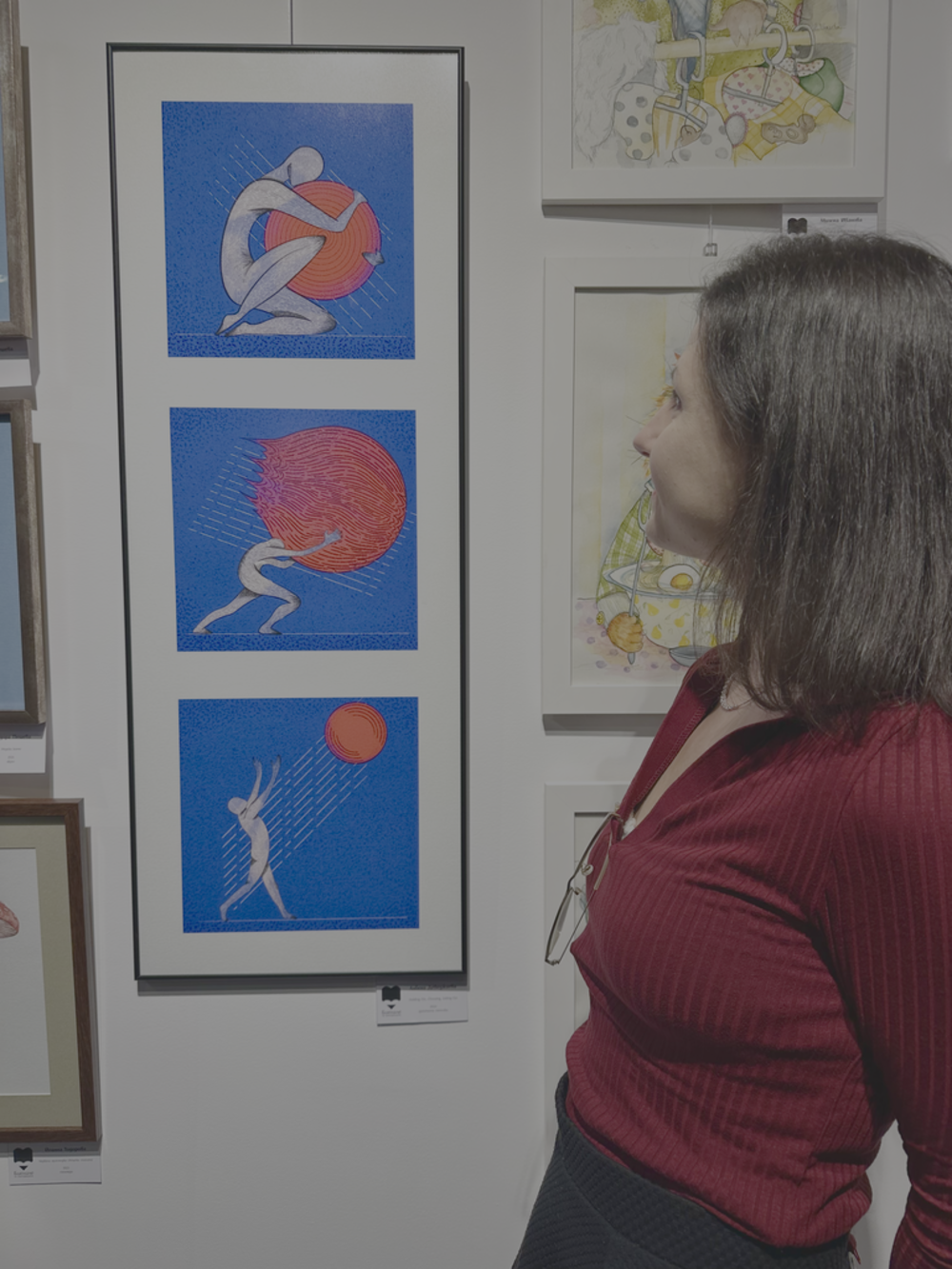
You spent several years in Berlin before returning to Sofia. How did the creative atmosphere in Berlin influence your artistic direction, and how does it now contrast with your life in Bulgaria?
Berlin is a city of contrasts. It’s vibrant and endlessly creative, yet raw and sometimes overwhelming. It’s green but crowded with concrete, full of people yet often lonely. Art there is fearless – unafraid to disrupt, to provoke, to take up space. My time there taught me to step out of my comfort zone, to challenge myself, and to embrace imperfection.
Sofia feels different – quieter, but rich with tradition, charm, and a quiet sense of spirituality that runs deep in its culture. The art scene here may be smaller, but it carries a depth born from the meeting of heritage and innovation. Many artists return from abroad, bringing with them new perspectives that blend into our cultural fabric. Berlin expanded my world; Sofia anchors me in a place that still inspires me in new and unexpected ways.
Sofia has a growing and vibrant art scene. Are there any Bulgarian art spaces, collectives, or projects that have especially influenced or supported your development as an artist?
Yes – spaces like KO-OP, Credo Bonum, One Gallery, Little Bird Place, the National Gallery, Kvadrat 500, and the Sofia City Art Gallery are places I visit often for inspiration. The Biennial of Illustration has been especially important to me – my series Holding On, Choosing, Letting Go was exhibited there in 2024, and other works in 2020. The Sofianer is another favourite project, capturing Sofia’s charm and spirit through illustration – its people, its architecture, its hidden corners.
In what ways has Bulgarian culture—its folklore, visual tradition, or contemporary movements—shaped your identity as an illustrator and designer?
Bulgaria’s folklore, myths, and traditions are full of symbols and stories. I’m drawn to the patterns in traditional embroidery – each carrying its own message of strength, protection, and identity. Nature also inspires me endlessly – from the deep blues of the Black Sea to the gold and green of the mountains.
And in design, Stefan Kanchev has been one of my strongest inspirations. His ability to capture an idea with clarity and purpose is a constant reminder that simplicity, when done with intention, can be incredibly powerful.
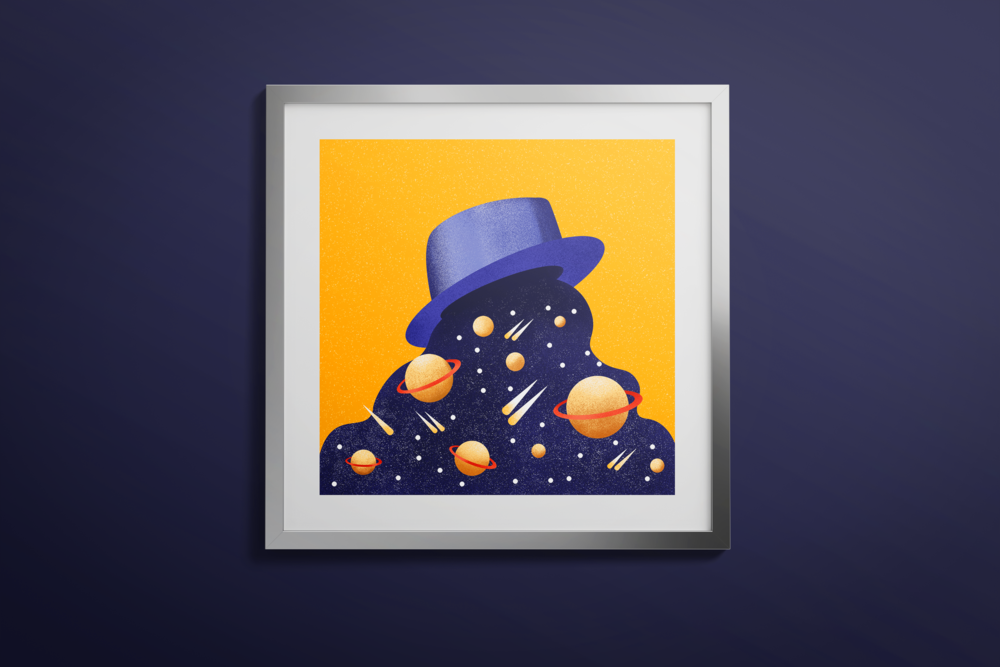
Your work bridges both commercial branding and deeply personal storytelling. How do you navigate the line between client-driven design and personal expression?
When I work with clients through my design studio, Albena Design, I ground the process in strategy, research, and collaboration. My aim is to create visual identities that are not only visually striking but also timeless and effective – designs that reflect the client’s values and resonate with their audience for years to come.
In my personal work, I follow feelings and intuition. Sometimes I create to quiet my thoughts; other times, to work through something I’m experiencing. It’s a way of translating emotions into shapes, colors, and textures – turning what is internal and often unspoken into something that can be seen and felt.
Both sides of my work are rooted in honesty. Whether I’m building a visual identity for a brand or an illustration for myself, my goal is the same: to create something that feels true and forms a genuine connection with the person experiencing it.
Are there particular Bulgarian artists—past or present—who have had a strong impact on your creative practice or outlook?
Zlatyu Boyadzhiev – for the depth and humanity woven into his expressive, narrative compositions.
Tekla Alexieva – for her surreal, dreamlike worlds and her fearless imagination.
Rumen Gasharov – for the colour, rhythm, and warmth in his portrayals of everyday life.
Each of them has shaped how I understand storytelling, emotion, and the extraordinary within the ordinary.
Do you think there is something unique or distinct about the illustration or design scene in Bulgaria today, especially for emerging creatives?
Absolutely. It’s where tradition meets modernity, where folklore and nature merge with contemporary influences. When I returned from Berlin six years ago, I wasn’t expecting to find the unconventional and exciting art I had loved there. Instead, I discovered a vibrant network of galleries, rotating exhibitions, artist talks, and a balance of both traditional and experimental work. It’s a community that feels alive and full of promise.

What’s next for you creatively? Are you planning to expand on the emotional themes from Holding On, Choosing, Letting Go, or explore new directions entirely?
The theme of emotions – and expressing and processing them through art – is very present in my life now, and I believe it resonates with many others as well. Too often, emotions like sadness, anger, or grief are treated as something to hide. We suppress them, avoid them, and rarely allow ourselves to move through them fully. I see them differently. They are an essential part of our human experience, our growth, and the lessons we carry forward.
Meeting those emotions without fear changes them. When we give them space, they begin to shift – from something heavy and isolating into something that connects us more deeply to ourselves and to others. For me, art is the bridge in that process. It turns what is internal and invisible into something that can be seen, shared, and understood. My hope is that my work reminds others that what feels heavy today can, in time, become a source of strength, meaning, and even beauty. And that none of us has to move through our emotions alone – there is always a way to transform them into something that helps us grow.

